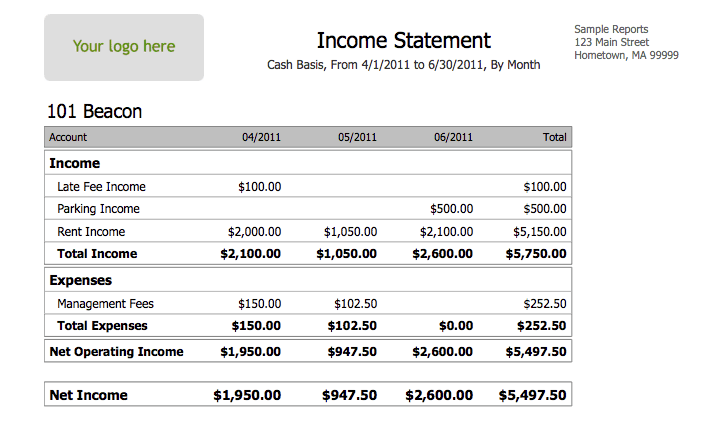Step-by-Step Guide to Creating an Income Statement for Rental Property
Step-by-Step Guide to Creating an Income Statement for Rental Property
Blog Article
Understanding the financial wellness of a rental property is required for any landlord seeking to maximise returns. Certainly one of the most effective resources for monitoring this really is an revenue statement. Also called a profit and reduction statement, that rental property income statement template overview of a property's revenue, expenses, and over all profitability.
An revenue statement isn't only for big corporations—it's equally important for landlords managing one or multiple rental properties. Listed here is how it performs and why it's crucial for monitoring profitability.

Breaking Down the Income Statement
An money statement contains three primary ingredients:
1.Revenue (Income)
That section contains all resources of revenue created from the property. For a landlord, this typically means hire money paid by tenants. But, it can also record extra revenue revenues such as for example parking costs, pet expenses, or washing facilities.
2.Expenses
Expenses in house administration can range between repaired fees like home taxes and insurance to variable costs like preservation, repairs, and utilities. That section also accounts for mortgage payments (if the property is financed), HOA costs, and also advertising expenses for getting tenants.
3.Net Profit
After complete costs are deducted from overall revenue, landlords can establish whether their home is profitable. A confident effect suggests profitability, while a negative determine factors to a potential reduction that requires immediate attention.
Why Income Claims Are Critical for Landlords
Using an revenue statement offers many vital advantages for landlords.
•Considering Profitability
The income statement supplies a simple solution to see whether your house is generating a gain or charging you money. This insight is key for making data-driven decisions.
•Determining Cost-Saving Opportunities
By itemizing costs, landlords can identify places where costs can be reduced. For instance, if power expenses are unusually high, it may be price analyzing energy-efficient upgrades.

•Checking Financial Tendencies
Revenue statements over time reveal performance trends. Landlords can track how profitability fluctuates with seasonality, industry problems, or unforeseen changes like tenant turnover.
•Encouraging Economic Targets
Whether planning to reinvest in the house or save for potential development, revenue statements help outline economic strategies. In addition they make it more straightforward to protected financing if needed, as lenders frequently require proof of profitability.
Ultimate Feelings
For landlords, an revenue record is more than just an accounting tool—it's a gate way to higher financial management. By regularly compiling and reviewing revenue statements, landlords may gain a deeper comprehension of their rental property's money flow and profitability, ensuring long-term success in the aggressive property market. Report this page